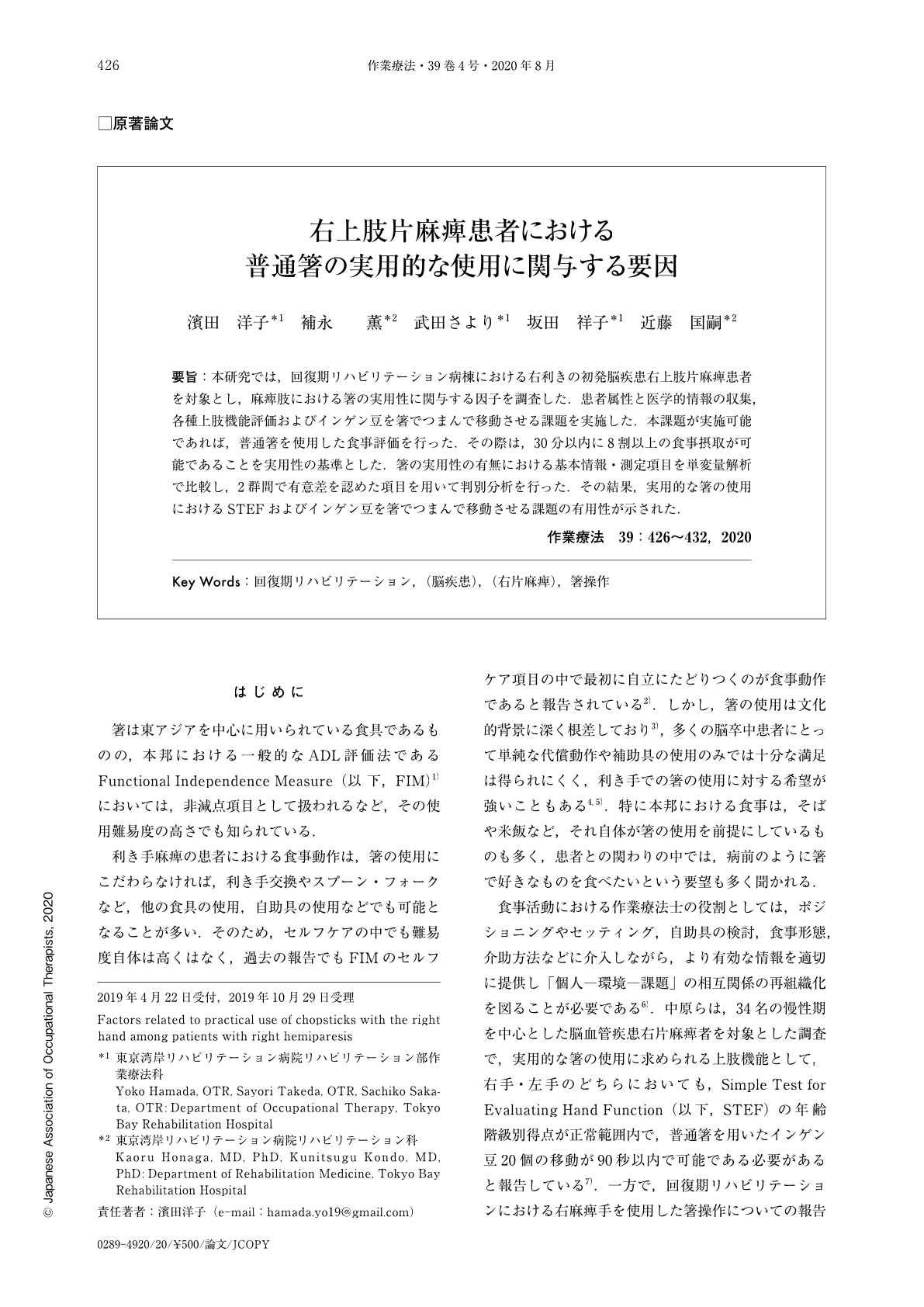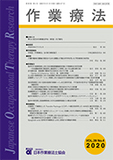Japanese
English
- 販売していません
- Abstract 文献概要
- 1ページ目 Look Inside
- 参考文献 Reference
- サイト内被引用 Cited by
要旨:本研究では,回復期リハビリテーション病棟における右利きの初発脳疾患右上肢片麻痺患者を対象とし,麻痺肢における箸の実用性に関与する因子を調査した.患者属性と医学的情報の収集,各種上肢機能評価およびインゲン豆を箸でつまんで移動させる課題を実施した.本課題が実施可能であれば,普通箸を使用した食事評価を行った.その際は,30分以内に8割以上の食事摂取が可能であることを実用性の基準とした.箸の実用性の有無における基本情報・測定項目を単変量解析で比較し,2群間で有意差を認めた項目を用いて判別分析を行った.その結果,実用的な箸の使用におけるSTEFおよびインゲン豆を箸でつまんで移動させる課題の有用性が示された.
This research focused on the practical use of chopsticks among patients with right hemiparesis after first onset brain disease in a convalescent rehabilitation hospital and investigated the relationship between clinical evaluations and practicality of chopsticks. We checked basic information and evaluated clinical tests. Patients did a speed test with chopsticks to pick up kidney beans. If patients successfully carried out this test, they attempted to eat a meal with regular chopsticks. The practicality of chopsticks was defined that patients could eat more than 80% of meals within 30 minutes with regular chopsticks. The patients were divided into two groups based on the practicality of chopsticks, and discriminant analysis was carried out by comparing the practicality of chopsticks with factors in which there were significant differences between the two groups by univariate analysis. The results indicated that STEF and speed tests are useful for predicting the practical use of chopsticks.

Copyright © 2020, Japanese Association of Occupational Therapists. All rights reserved.


